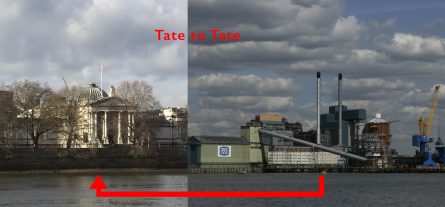Sugar is deeply connected to the rise of the British Empire and has shaped the fabric of London in many ways. London was the major port of the early empire and the Thames was transformed by the growing transatlantic trade. Sugar’s effect on society and culture can be seen all along the river (not least within the multicultural make-up of a post-colonial city) but is also expressed in the bricks and mortar of two key sites.
The Tate & Lyle factory in Silver Town is one of the last working ports on the upper river. Whilst every other dockyard, warehouse and factory has been repurposed for a post-industrial society, this is the one still-working connection to London’s origin as a port. The wealth generated from a triangular trade in slaves, cane-plantations and sugar created a mercantile elite that needed to legitimise their new-found wealth. They found the solution to this problem in the patronage of the arts and ‘Tate Britain’ bears the name of the sugar magnate Henry Tate who used his wealth to create this major institution.
‘Tate to Tate’ would be an action that re-connects these two sites via the labyrinth of tunnels that weave beneath the streets of modern London and specifically, the new ‘Super Sewer’ that runs along, beneath and parallel with the natural water-course above it. An inspection camera will first enter the un-seen sewer system via the u-bend of a sink in the Tate & Lyle refinery in Silver Town, East London. The camera will then navigate larger and larger pipes and tunnels until it emerges into the cavernous Thames Tideway Tunnel. It will then make its way along this tunnel, traveling west until it once more enters the smaller sewage arteries and finally emerges into the daylight via a u-bend in Tate Britain in Pimlico, West London. Captured in a video-work, this journey would map the flow of raw wealth as it transformed itself into cultural power.
